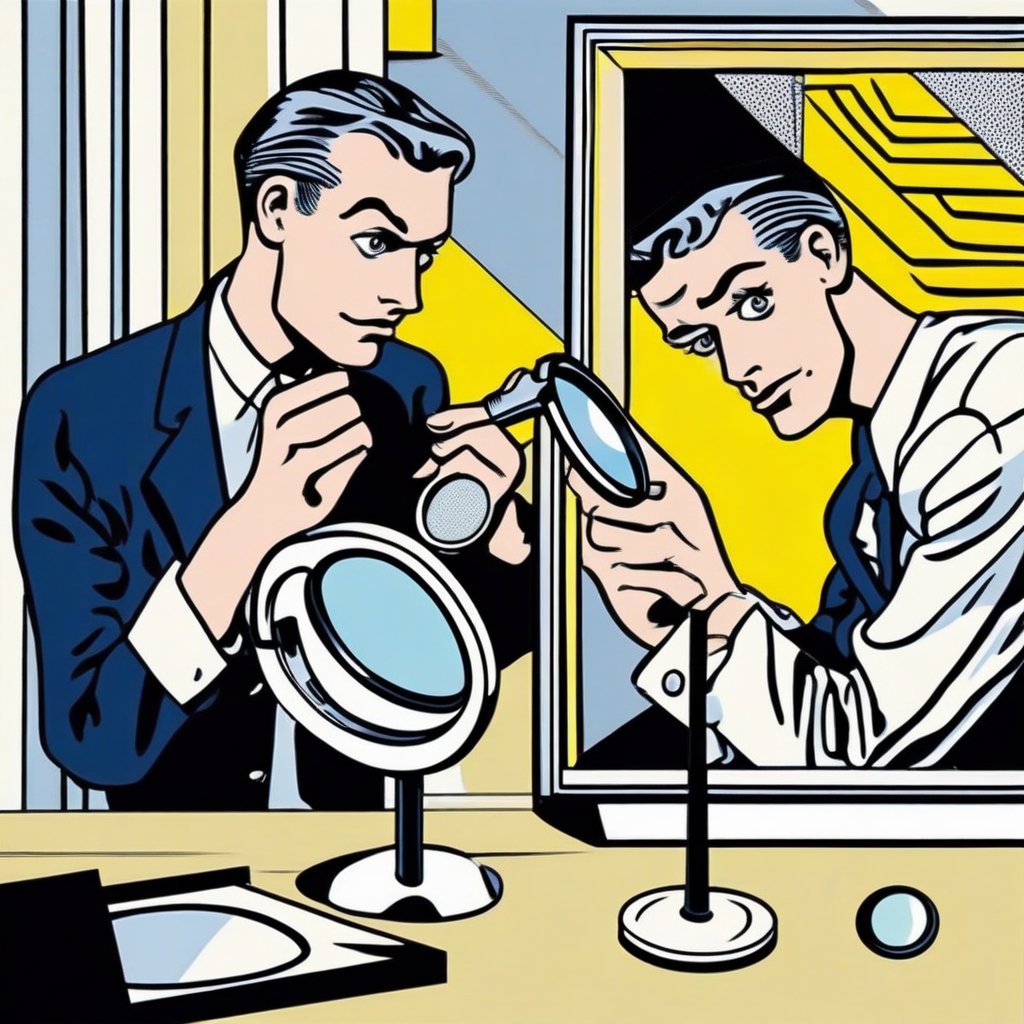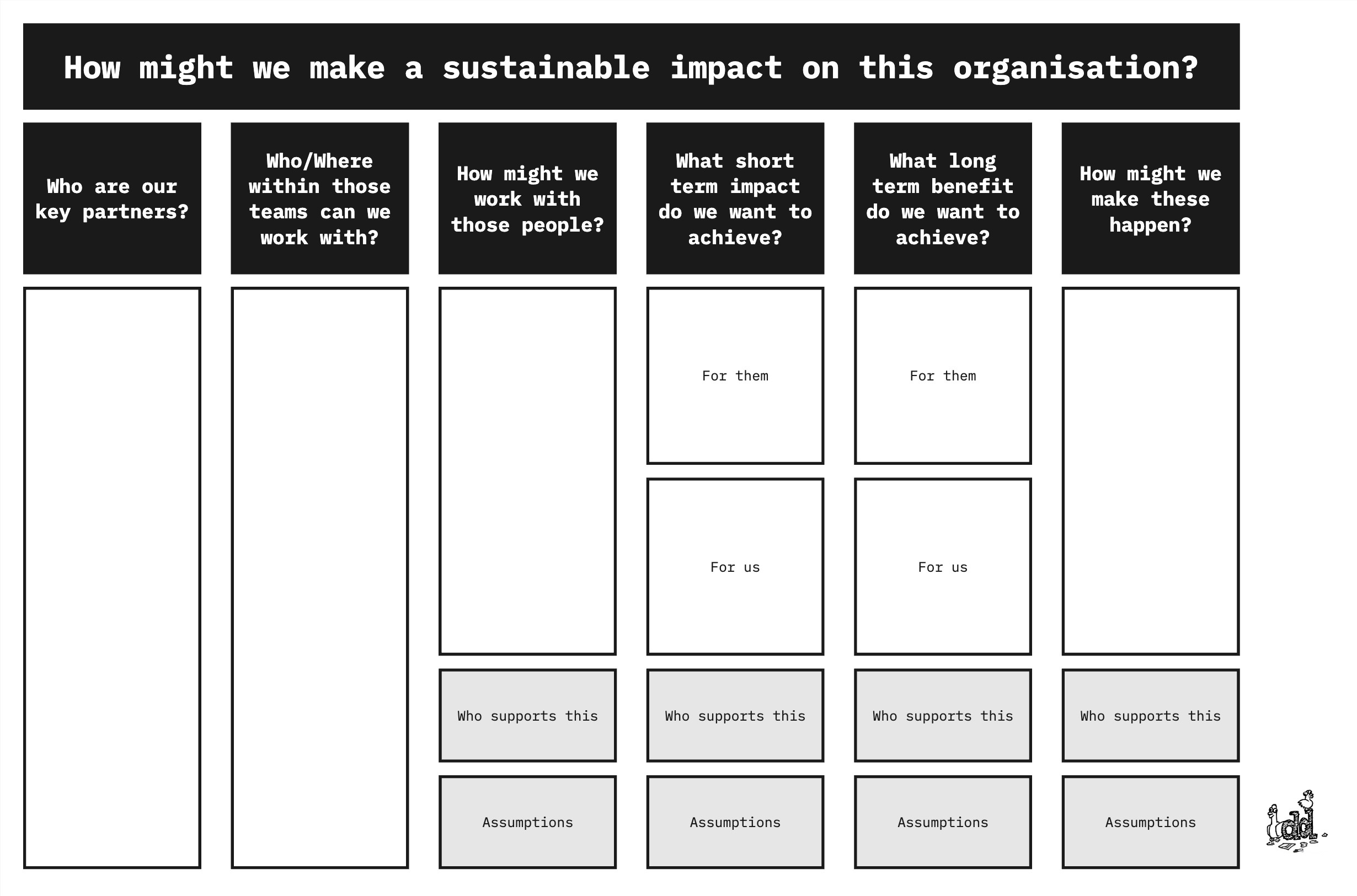Why you made a bigger impact as a smaller design team
Recently read a blog post by Katherine Wastell about the phases of establishing design. I like giving names to things. As it makes it possible to think and discuss about what to do.
In it there was a funnel visualisation of the impact teams have and it grew as you moved through the phases of design.
It got me thinking however, that as we scale up the size of design teams in organisations, the actual impact of design doesn’t always follow that idealistic path. That is, many times once we start to scale up design we actually become too inwardly focused and make less impact per person.
A small design team or community is often more impactful.
Why?
They’re less focused on internally and self-serving/healing patterns and processes and more about looking out and doing things and getting mucked in.
There’s less people to manage. Grow and check on.
There’s more lines of communication in big teams. And places to hide, disappear.
You may to join parts of an organisation less willing to work with your team.
And there’s more people who may want to pull in different directions. From design components and patterns to whole ways of working.
So, as you grow you’ve got new pains and problems to deal with. Job descriptions. Specialisms. Communications challenges. You have to shift people around to where the money is and maybe not to where the impact is.

What happens over time is the team also embodies this. It becomes inwardly facing and focused and stops looking out and partnering with the rest of the teams to get things done.
I’ve been in countless leadership and lead design meetings where the only thing happening is some navel gazing and frustration. Where the question of “how do we make a positive impact?” has ceased to be asked in one shape or form. And it’s mostly about recruitment or retention but not action on either.
The thing is. It’s quite clear why you fall into this trap. As you deliver you optimise for impact and don’t put the things in place to keep the community or team healthy. Things start to break. People will leave or get frustrated at a lack of promotion or clarity or the weight of bureaucracy or similar.
So a switch is made to focus inwardly. But you start losing the focus to really make an impact beyond design.
This can be quite damaging to design as a function within a company. You hear “there’s more of you but you make less of an impact”. And however much you hate to agree we’ve probably all seen that.
So what to do?
Be conscious of it. That cycle of inward and outward focus. Making sure we hold ourselves and our teams to account to making an impact. Of looking out there and to making an impact and improving things.
Have solid “business partnering” process. That is, have a process where you have people support other people meet their goals. This can be through small things like letting teams experience design. Or it can be specific people who ensure your designers and teams are adding value to the most impactful areas of the business. Typically this is the product or engineering department or an impactful programme of work. So have designers who collaborate with the leaders of those teams to see how and where design can help. With the ability to quickly help solve some of the other departments major problems or issues.
Treat internal issues and processes like design problems. Keep them small, iterate and use small prototypes to find the right thing to do.
Make sure you’re focused and clear that adding value to your users and other teams is what’s important. And that your most talented and skilled people continue to do that.

Make sure you claim your part and your team’s part in successes. Do not be shy to build the story of your impact. Even if it is shared.
Don’t just burden your most experienced doers to run the community. Or to create the internal processes. Spread that out and even hire people to do those things.
But whatever you choose to do. Think about the strengths of those smaller teams making an impact. They:
- Hunt for opportunities to add value
- Get on with designing things
- Look to collaborate and grow influence beyond their own profession or skillset
And ensure your teams and functions keep doing those things and those things are still cherished and rewarded.
I’ve lost count of the number of places that promote their best designers and then burden them with internal facing problems. Regardless of whether they’re suited to them. Or if the organisation cares about that stuff. And then lose momentum in showing the impact design can make.